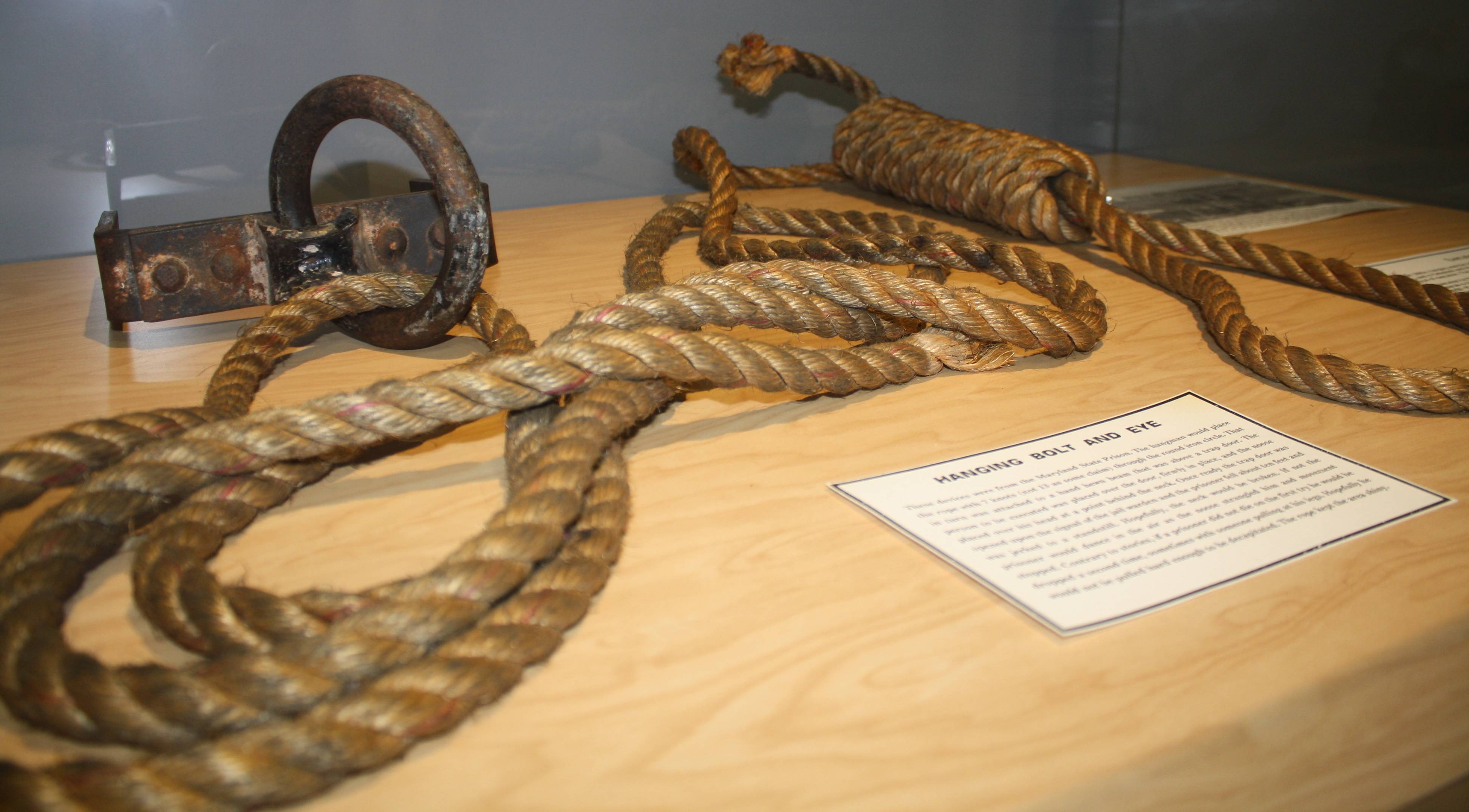

The Case of Charles Rodman Campbell
References
- Oxford English Dictionary, 2nd ed. Hanging as method of execution from c1000, as method of suicide from 1325
- CAMPBELL v. WOOD,1994
- The Dakota Conflict Trials of 1862". Retrieved July 17, 2006.
- John T. Brennan, Ghosts of Newport: Spirits, Scoundrels, Legends and Lore (The History Press, 2007), pg. 15 [1](Retrieved Google Books on July 20, 2009)
- "The Last Public Execution in America". Npr.org. Retrieved 2012-06-20.
- "On This Day: Kentucky Holds Final Public Execution in the US". Findingdulcinea.com. Retrieved 2012-06-20.
- "Section 630.5, Procedures in Capital Murder". Retrieved 2006-04-27.
Hanging
Hanging has been a common method of capital punishment since medieval times, and is the official execution method in many countries and regions.[1]
In 1853, hanging was the "nearly universal form of execution" in the United States, and 48 States once imposed death by this method.[2]
The largest single execution in United States history was the hanging of 38 Dakota people convicted of murder and rape during the brutal Dakota War of 1862. They were executed simultaneously on December 26, 1862, in Mankato, Minnesota. A single blow from an axe cut the rope that held the large four-sided platform, and the prisoners (except for one whose rope had broken and who had to be re-hanged) fell to their deaths.[3] The second-largest mass execution was also a hanging: the execution of 13 African-American soldiers for taking part in the Houston Riot of 1917. The largest non-military mass execution occurred in one of the original thirteen colonies in 1723, when 26 convicted pirates were hanged in Newport, Rhode Island by order of the Admiralty Court.[4]
Until the mid 1800s, executions were public events. Both public sentiment on the morality of the death penalty and the unruly nature of the crowds that attended executions made it compelling for states to outlaw the practice. The last public hanging in the United States took place on August 14, 1936, in Owensboro, Kentucky. Rainey Bethea was executed for the rape and murder of 70-year-old Lischa Edwards. The execution was presided over by the first female sheriff in Kentucky, Florence Shoemaker Thompson.[5][6]
Only the states of Washington and New Hampshire presently retain hanging as an option. In New Hampshire, if it is found to be "impractical" to carry out the execution by lethal injection, then the condemned will be hanged, and in Washington the condemned still has an outright choice between hanging and lethal injection.[7]
Early forms of capital punishment were designed to be slow, painful, and torturous. In some ancient cultures law breakers were put to death by stoning, crucifixion, being burned at the stake, and even slowly being crushed by elephants. Later societies found these methods to be cruel and unusual forms of punishment, and sought out more humane practices.
Cruel and unusual punishment, a phrase describing punishment which is considered unacceptable due to the suffering, pain, or humiliation it inflicts on the person subjected to it, is at the heart of the arguments relating to capital punishment. The debate over humane methods of execution rages on. By its very nature the taking of a human life is not humane, therefore an acceptable compromise between justice and cruelty will probably always be a topic of concern.